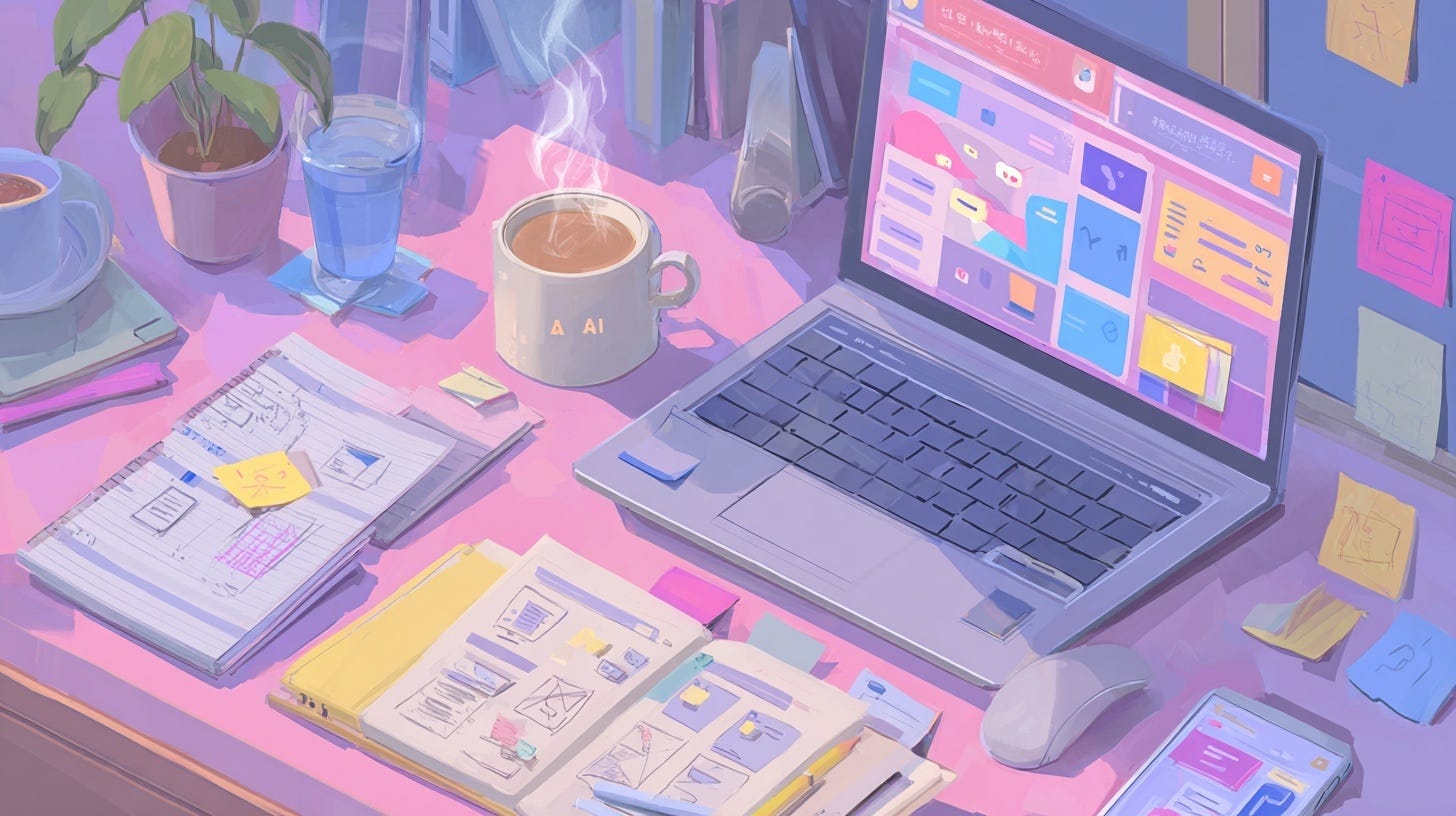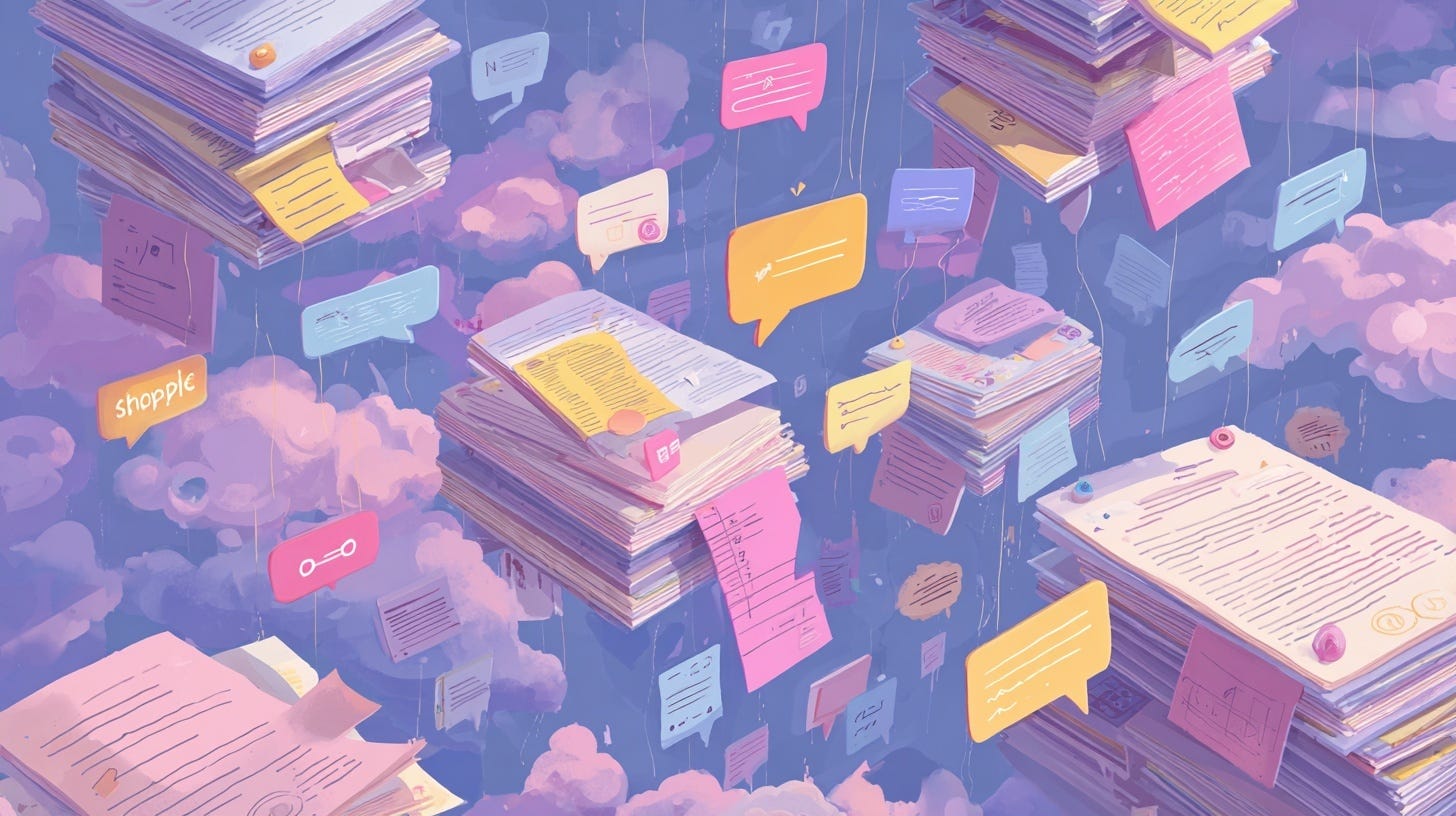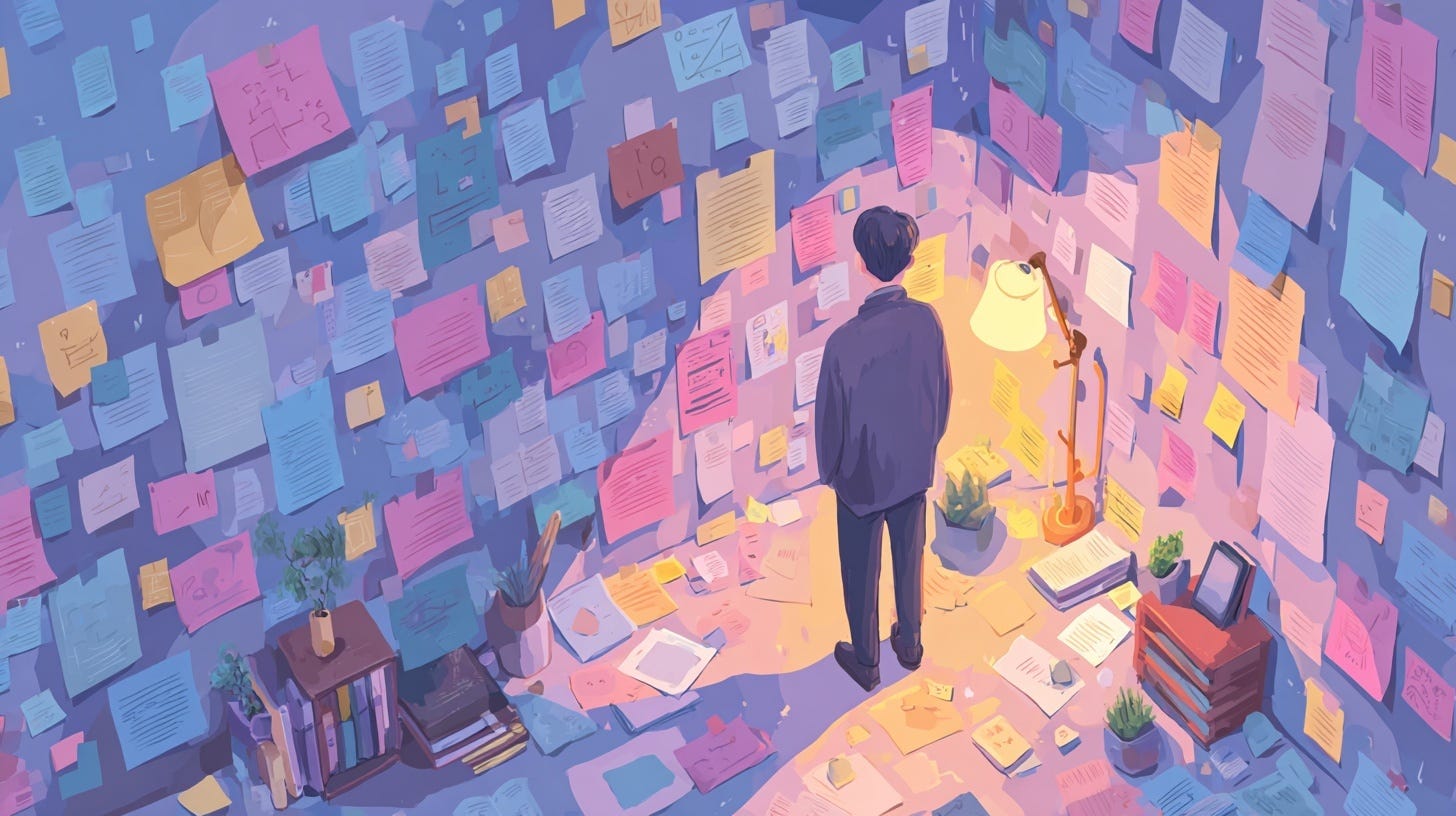Signals from the top
What CEOs, research, and your own workflow are already telling you about design’s AI future
After 14 years in product design, I've learned to spot the moments when everything shifts. New tools come and go. Methods get trendy, then fade. Teams reorganise constantly. But what's happening with AI right now feels different. It makes you question what you thought you knew about how design work gets done.
If you're panicking about AI's role in our industry, you're not alone. When ChatGPT started gaining traction, I had that moment too – wondering if my role was about to disappear.
But that's not what's happening. What's unfolding now is more complicated than simple job replacement. The signals coming from companies across the world tell a story every designer needs to understand.
The signals are everywhere
In April 2025, I started collecting internal company memos about AI – partly out of curiosity, partly because they felt like historical documents in real time. It kicked off with a tweet from Shopify's CEO Tobi Lütke that made me sit up and pay attention.
Lütke’s message was clear: “Reflexive AI usage is now a baseline expectation.” At Shopify, if a team wants to hire, they now have to prove AI can’t do the job first.
Soon after, other CEOs started saying the quiet part out loud:
Klarna's Sebastian Siemiatkowski said AI helped them shrink their workforce by 40%, including 700 support agents. They even used an AI avatar to deliver the company’s quarterly earnings report. Fiverr's CEO told employees straight up: "AI is coming for your jobs. Heck, it's coming for my job too."
Then came the big tech companies. Google's Sundar Pichai called AI a "profound platform shift" and restructured hiring around it. Microsoft's Satya Nadella called it "the next major wave of computing". Meta's Zuckerberg refocused the entire company's 2023 strategy around generative AI.
These aren't just company updates. They're roadmaps for where the industry is heading.
What the data tells us
This isn't just noise – the numbers back it up. In 2024, Anthropic's CEO warned that AI could wipe out half of entry-level white-collar jobs and push unemployment up to 20% within five years.
McKinsey's latest report shows 78% of companies use AI in at least one part of their business – up from 55% the year before. They're predicting three hours of work a day could be automated by 2030.
While AI might displace 85 million jobs by 2025, it could also create 97 million new ones. So yes, jobs are changing fast. But there's space to adapt if you move quickly.
What this looks like day to day
I've been testing AI in my work for a couple of years now. Some days it feels like having a superpower. Other days, it's a frustrating mess.
Research moves faster when you're specific
For a recent fintech dashboard project, I needed to compare 20+ data visualisation patterns. My first AI prompt was too vague and gave me generic rubbish. But after refining my approach, I had a solid baseline within four hours – something that used to take me a week.
The insights were still mine. AI just gave me more time to think about what mattered.
Creative blocks break quicker
I got stuck designing navigation for a healthcare product last month. The usual flows weren't working, and I was going in circles. I described the context to Claude, Anthropic's AI assistant, and while most responses were junk, one suggestion helped me spot a completely different angle.
It reminded me of the 2004 Red Sox comeback. Down three games to none against the Yankees, something clicked and they started moving. Sometimes you just need that one different perspective to shift everything.
Prototyping gets scrappy fast
I needed three variations for a form-handling flow recently. AI gave me rough versions of each within minutes. The code was messy, but it forced me to get clear on what each version was trying to prove.
That kind of speed cuts through perfectionism and gets you testing faster.
Skills that actually matter now
Prompt writing as a core design skill
This is about structure, not magic. I keep a running list of what works:
For competitor research: "Analyse checkout flows of [competitors] for [product type]. Focus on error handling, progress indicators, trust signals."
For design critique: "Review this [interface] for [user type]. Goal: [outcome]. Evaluate against usability heuristics and [constraints]."
For ideation: "Give me 10 approaches to [problem] for [context]. Include [constraint 1] and [constraint 2]. Show rationale."
Sharpen your judgement
Most AI output needs serious editing. I treat it like feedback from a junior designer – useful, but it needs review. You still need to check accessibility, brand fit, technical feasibility, and edge cases that AI consistently misses.
Keep your systems thinking tight
AI's speed can wreck coherence if you're not careful. You need clear foundations: design tokens, component logic, naming conventions. Without that structure, everything splinters.
Design-adjacent skills like prompt engineering and systems thinking are climbing fast – the World Economic Forum flagged both in its latest report. And they’re right. These days, we’re not only designing for people – we’re working through machines to reach them.
How teams are changing
Design and development feedback loops are getting tighter. We can test more variations faster, so conversations with engineers focus on outcomes instead of redlines.
Research isn't as gated anymore. PMs and researchers work together on transcripts, synthesis, and themes. Nobody waits for a 50-page deck.
Reviews are sharper too. We spend less time asking "what else could we try?" and more time on "which of these actually serves the user best?"
What still calls for human judgement
Some of the biggest mistakes with AI in design come from assuming the output is ready to ship. It almost never is.
Build stronger AI judgement
Prompting well is useful. But the real skill is knowing when the response is usable – and when it’s confidently wrong. Generative tools can miss nuance, overfit to patterns, or smooth over edge cases. You need to spot that early. Don’t just review the output – interrogate it. What’s it assuming? What’s missing? What would break under pressure?
Stay close to the work
The fastest way to build this judgement is to stay hands-on. Treat each output as a draft, not a decision. Sketch, test, refine. Watch how your prompts evolve, and where things fall apart. Patterns will emerge. The more you engage, the sharper your instincts get.
Check your cultural lens
Most generative tools still reflect the assumptions and perspectives of the data they were trained on – often shaped by Western, high-income contexts. Good designers know when to challenge those defaults, and how to adjust for real-world contexts AI won’t understand on its own.
Validate with real users
No matter how fast or clever the tooling becomes, the truth still lives with users. Use AI to move quickly – not to skip steps. Get your ideas in front of people early. It’s the only way to know if it works.
The shift’s already underway
The question isn't whether AI will change design work – it already has. The question is whether you're ready to change how you work.
The best designers I know adapt quickly. They use new tools, test their assumptions, and stay close to the actual work. They're learning to communicate clearly with both people and machines.
I still sketch ideas in a notebook with strong coffee. But when I need to explore options fast, test variations, or move with a team, AI is part of the process.
The shift is already here. Designers who lean into it are already moving faster – not because they’re working harder, but because the tools are.
Adaptation beats worry every time. Good prompts get better output. Designers who use AI thoughtfully will outpace those who don't. You still need strong opinions and sharp judgement. The shift is already underway – better to be in it than catching up to it.
I'm still figuring this out too. But I'd rather learn in public than wait on the sidelines.
Thanks for reading! This article is also available on Medium, where I share more posts like this. If you're active there, feel free to follow me for updates.
I'd love to stay connected – join the conversation on X, Bluesky, or connect with me on LinkedIn to talk design, digital products, and everything in between.






